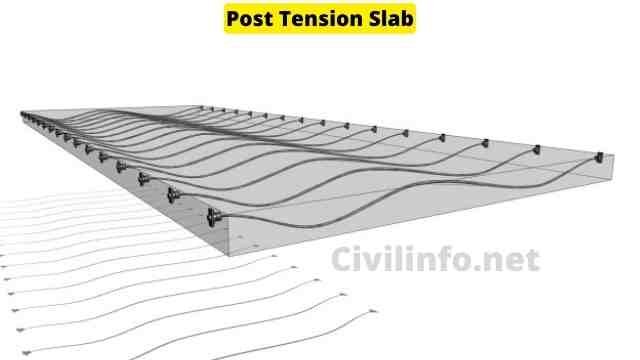What is a Post Tension Slab?
A post tension slab is a reinforced concrete structure that is designed to resist lateral forces. That’s because the slab can carry more weight on either side of the beam if it is anchored to a pillar. A well-designed post tension slab can withstand lateral loads without cracking or buckling.
A post tension slab is a type of pre-stress concrete. It is a slab that has been cured with a high-strength polymer and then further strengthened by the use of steel or other materials.
The main disadvantage of using post tension slabs is that they are expensive to install, which makes them not as popular as pre-stress slabs.

What are the Benefits of Using a Post Tension Slab
Post tension slabs are a type of concrete slab that allows for easier construction of a building. This type of slab is typically used in skyscrapers, bridges, and other structures that have to support a lot of weight.
The benefits of using post tension slabs include:
- less labor required
- faster construction time
- more durable and stronger than other types of slabs
- better insulation
- better sound absorption
The benefits of using a post tension slab are numerous. These include the ability to support heavy loads, use in any climate, and prevent damage to the foundation. One of the most important benefits is that these slabs provide flexibility for future construction needs. They can be adjusted or replaced with ease without causing damage to the existing structure.
A pre-fabricated post tension slab is a great option for those who are looking to get a new patio. It’s easy to install and it provides a lot of benefits.
Benefits of using a pre-fabricated post tension slab:
- It comes in many different colors, styles, and sizes
- It is easy to install and requires little to no maintenance
- It can be removed when you want to change your patio design
What is a Post Tension Slab and How Does it Actually Work?
A post tension slab is a type of concrete construction that is designed to be used in high-rise buildings. It is mostly used in skyscrapers, but it can also be used in other buildings that have a lot of floors.
The advantages of using post tension slabs are that they are more cost-effective than other methods and they reduce the time it takes to build the building. They also make for better use of land as they can be built on top of existing structures; this makes them easier to build and less expensive when compared to other methods.
The main disadvantage is that these slabs cannot support their own weight, so they need to have additional support from the surrounding structures.
How are Post Tension Slabs Disrupting the Concrete Construction Industry
Post tension slabs are concrete slabs that are not only strong and durable but also more flexible than traditional concrete. This makes them the perfect choice for a variety of construction projects.
Post tension slabs have advantages over traditional concrete construction in terms of:
● More flexibility – post tension slab can be easily adjusted to accommodate changes in site conditions.
● Greater durability – post tension slab can withstand the different environmental conditions, including temperature and moisture extremes, unlike traditional concrete.
● Better performance – post tension slabs provide better performance and energy efficiency than traditional concrete constructions.
Post tension slab benefits include greater durability and better performance than traditional concrete constructions, making them a popular choice among construction companies today.
Advantages of Post tension slab
Post tension slab is a type of concrete that can be produced with a high-strength mix and a low-cement content. It has the advantages of being more durable, lighter, and easier to transport.
Post tension slab is primarily used for building bridges, roads, parking lots and other infrastructure projects. It is also used for making sidewalks and driveways.
Advantages of post tension slab:
- It has a higher strength than regular concrete.
- The low cement content makes it lighter to transport and easier to install as well as reduce the amount of time it takes to make the project happen.
Disadvantages of Post Tension Slab?
Post tension slab is a concrete slab that does not use steel reinforcement rods. This type of slab has been used in construction since the early 1900s. Post tension slab is a type of concrete which is used in the construction of buildings. It has its disadvantages as it needs to be supported by steel or reinforced concrete after it is poured.
The disadvantages of post tension slab are that it is more expensive to construct and requires more labor to install as compared to a reinforced concrete slab. It also has lower strength than a reinforced concrete slab, making it prone to cracking and breaking during construction.
The disadvantages of post tension slab are that it is not suitable for long spans of time, especially when it comes to large-scale projects.
The main disadvantage of post tension slab is that it requires more time for curing and hardening, which increases the cost of construction.
Can You Dismantle a PostTension Slab?
Post-tensioned slabs are a common construction technique in the United States. The process of dismantling a post-tensioned slab is different from that of other types of slabs.
The removal of a post-tensioned slab is more complicated than the removal of other types of slabs. This is due to the need for special equipment and techniques to remove the slab safely, as well as to prevent damage to surrounding structures or injury to workers involved in the process.
1 thought on “What is Post Tension Slab – Its Advantages and Disadvantages”